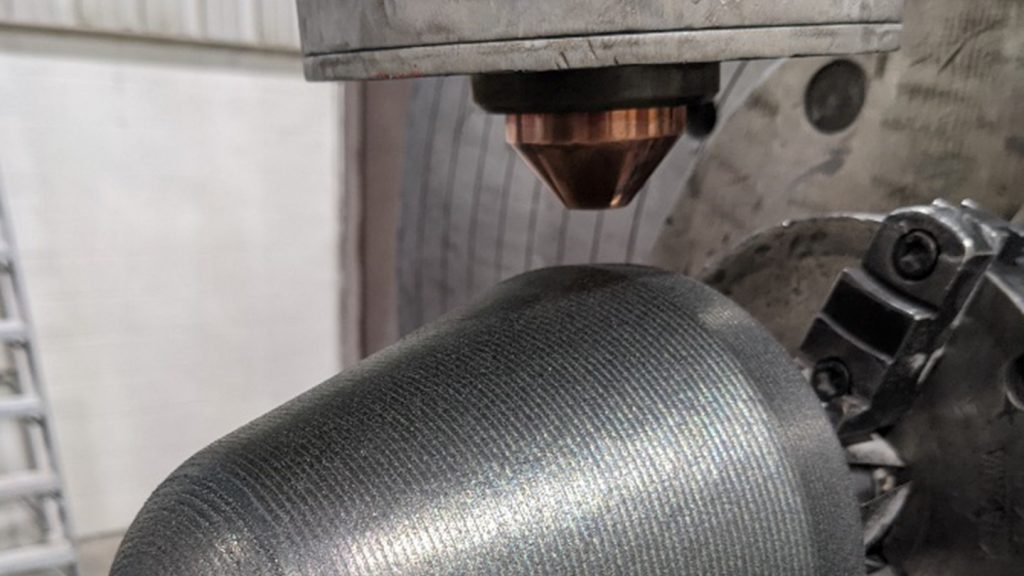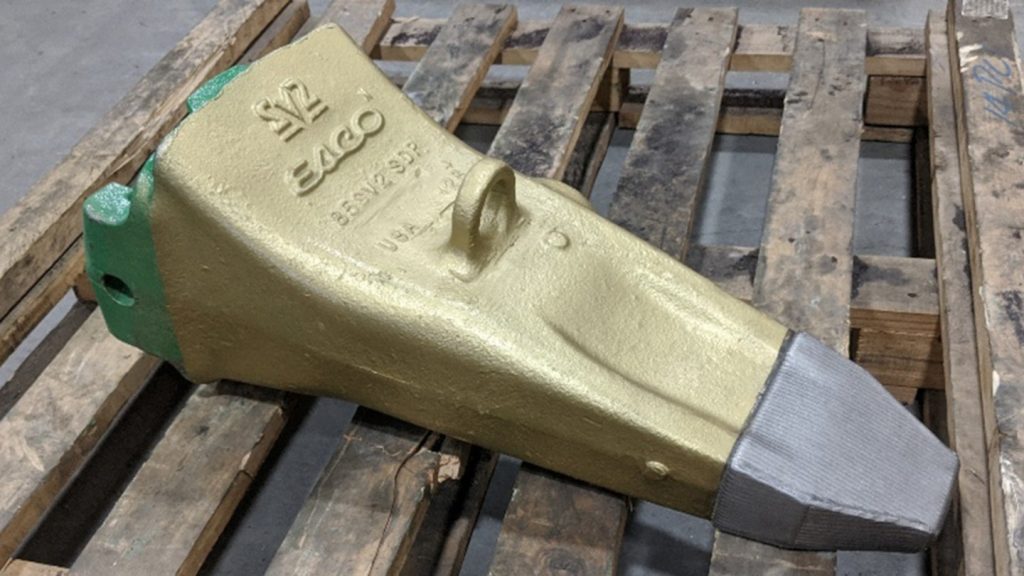Insiders and analysts predict the 3D printing trends to watch in our latest series of articles focused on the future of 3D printing.
A collection of organizations from Germany and Canada have set up a new consortium to automate the process of repairing parts using 3D printing and artificial intelligence.
The project, named Artificial Intelligence Enhancement of Process Sensing for Adaptive Laser Additive Manufacturing (AI-SLAM), aims to develop advanced AI-based software to automatically run Directed Energy Deposition (DED) 3D printers. Used in conjunction with Fraunhofer’s LMD technology (a form of DED), the software will algorithmically manage the printing process to more effectively repair irregular surfaces on damaged components – all without the need for human input.
On the German side, the consortium includes the Fraunhofer Institute for Laser Technology (ILT) and software developer BCT. In Canada, the work will be overseen by the National Research Council of Canada (NRC), McGill University will coordinate the research, and machine learning firm Braintoy will help program the AI models. Alberta-based manufacturing service bureau Apollo Machine and Welding will also be providing additional 3D printing services to aid the research.

DED 3D printing for part repair
According to the AI-SLAM consortium, manufacturing firms that serve the mining and petroleum sectors receive a large number of orders for repairing parts that have been worn down due to extensive use. Apollo, for example, uses several tons of metal every year to repair worn parts. This includes components such as rock crusher teeth, which would otherwise need to be replaced due to changes in shape over time.
Thanks to DED’s ability to 3D print on existing parts and surfaces, the technology is often used for part repair and MRO applications. Users can simply print new layers on worn parts to reconstruct the original shape of the surface.
Unfortunately, parts that have experienced heavy wear tend to feature uneven surfaces. This calls for the use of varying layer thicknesses during the 3D printing process, whereby a machine operator would need to adjust the process parameters every few layers. Seeing as this workflow is highly tedious, the consortium aims to automate it via the use of AI.
AI and automated process control
The AI-SLAM software will work by automatically recording the geometry of the worn part during the printing process, calculating the deviation from the desired contour, and readjusting the process parameters to achieve the geometry of the original part. The process control software will have full access to parameters such as the feed rate, which it will optimize on a layer-by-layer basis using machine learning algorithms.
To train the software in the first place, the consortium will feed it with a large dataset to teach it how to iteratively improve the 3D printing process based on an ever-changing part geometry. So far, the project partners have already held regular video meetings and jointly developed several documents online. They’ve also taken virtual laboratory tours of each other’s facilities to become familiar with the workspaces on both continents.
To enable the exchange of process data and implementation of the machine learning models, Braintoy has activated its in-house web platform, mlOS (Machine Learning Operating System), for all of the project partners. The joint project is set to be completed in March 2024 and is being funded by Germany’s Federal Ministry of Education and Research and Canada’s NRC.

Machine learning has a number of applications in additive manufacturing, beyond just automating process control. Markforged, a manufacturer of metal and composite 3D printers, has previously launched its AI-based Blacksmith software. Leveraging the X7 3D printer’s existing laser micrometer and a patented scanning algorithm, Blacksmith accurately measures the dimensional precision of parts as they are being printed. This scan data is then cross-referenced against the intended design files, giving manufacturers the ability to assess just how close the printed part is to the original STL.
Elsewhere, 3D printing software provider Gravity Pull Systems has previously launched a machine learning-based workflow optimization system for industrial 3D printing. Dubbed Synoptik, the software is aimed at service bureaus serving a wide variety of industries such as aerospace, medical and automotive. By providing optimization operations for every step of the 3D printing workflow, from pre-processing to post-processing and quality inspection, Synoptik is intended to fill every niche there is.
Subscribe to the 3D Printing Industry newsletter for the latest news in additive manufacturing. You can also stay connected by following us on Twitter, liking us on Facebook, and tuning into the 3D Printing Industry YouTube Channel.
Looking for a career in additive manufacturing? Visit 3D Printing Jobs for a selection of roles in the industry.
Featured image shows a stone crusher tooth being 3D printed using Fraunhofer’s LMD process. Photo via Apollo Machine and Welding.



